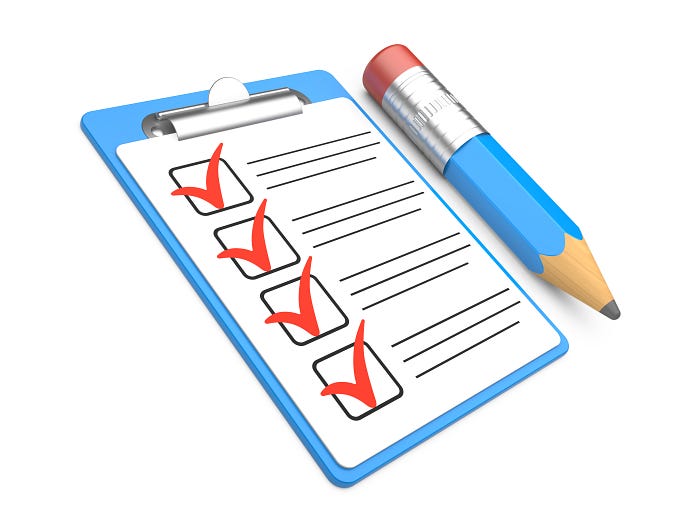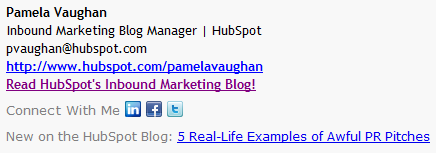Five questions to ask before sending your next marketing email
News flash: Throw-caution-to-the-wind, hope-for-the-best marketing campaigns don’t work.
Need proof? Just take a look at your inbox. How many unread emails do you have? Truth is, most emails are never opened, and those that are deleted shortly afterward.

Successful campaigns don’t happen by accident. They’re the result of intentional planning. If you want to improve your marketing data, stop leaving things to chance.
Before you send your next email, ask yourself these five questions. When you can answer, “Yes” to each one, you’re ready to send. Before that? It isn’t worth it.
Would I open my email?
As Adrian J. Hopkins put it, “Your subject line is the caller ID of your email — it will determine whether it gets answered or ignored.”
Take a look at your subject line, then ask yourself: If this was sitting in my inbox, would I open it? If you wouldn’t, why would you expect your subscribers to?
Need a hand to get started? Check out The Seven Best Subject Lines Ever. Here are a couple tips to get you going:
- Used wisely, humor upgrades your subject line from “Blah!” to “Hah!”
- Your subject lines should be relatable and aspirational
- Use urgency to break through procrastination and get commitments
And keep in mind, your first subject line probably isn’t gold. That’s why you should create a list of 15–20 options before choosing one.
Am I using my signature as a marketing tool?
Signatures are the most underutilized email marketing tool out there, and I’d be willing to bet you aren’t using yours to its full potential.
Think of the average signature: Name, title, company, email address. Boring, pointless, and a waste of valuable real estate.
Start adding links into your signature to increase user engagement. How about a website, blog, or social sharing icons?
Pamela Vaughan, Hubspot’s Inbound Marketing Blog Manager, is a great example of email signatures done right:

You can also get a little more creative with your marketing signatures and add graphics, like Jessica Reed of Openplus:

Your signature is the last thing your subscribers will read, so leave them with something worth remembering. Not sure what to include? Check out Hubspot’s 10 Clever Ways Your Email Signature Can Support Your Marketing.
Does my email have a clearly-stated purpose?
Every email needs to have a clear purpose. What are you trying to accomplish? What do you want your subscribers to do?
- Sign up for a course?
- Upgrade their account?
- Refer a friend?
Whatever the goal is, it should be readily apparent in your content.
Unless you’re sending out an informational email, you probably want your subscribers to do more than just read. You want them to take action and, unless that action is obvious, they aren’t gonna do it.
But don’t just make it obvious, make it easy. Use bold graphics and call-to-actions because, as we mentioned in The Ultimate List of Email Marketing Statistics, they’re 28% more effective than text links at increasing engagement.
Do I have a way to measure the performance of my email?
According to MEC Labs, 17% of marketers don’t track or analyze their email metrics. Don’t be a part of that percentage. If you don’t track your data, you can’t improve your performance.
At the very least, you need a tool (Like Reply!) to track your open, click-through, and response rates. You should also attach UTM tags to each of your embedded links, and use a website activity tracker to measure your subscriber’s out-of-email engagement.
Your emails need a goal, but you also need a way to measure the success or failure of that goal. So track everything; successes, failures, and everything in between.
The more data you have to work with, the better the decisions you’ll make. And the better the decisions you make, the better the campaigns you’ll run.
Is the content presented in a clean, consistent, easy-to-read format?
Emails are ugly. Left to their own devices, they’re just massive walls of text telling you what to do, what to buy, and what to be. If that’s what your emails look like, expect to wind up in the Junk folder.
Your content needs to be original, engaging, and entertaining. Here are a few tips to keep in mind as you write your emails.
- Space out your text. Never include more than 3–4 sentences in a paragraph before beginning a new line. This makes your information easy to skim and digest.
- Use images. Images are a great way to break up text, but keep in mind that most email clients block graphics by default. Never put vital information in an image-only format.
- Edit. Again. Your copy doesn’t have to be perfect, but it should be pretty darn close. Try using a text-to-speech tool to have your content read back to you. Listening to your own writing is a great way to catch sneaky typos and fix awkward sentences.
Once a subscriber has opened your email, you only have 3–4 seconds to catch their interest. If your content doesn’t make an immediately positive impression, it doesn’t matter how valuable the information is; your subscribers won’t engage.
Success isn’t accidental
Successful marketing is all about building relationships, and no relationship can be successful without intention.
You aren’t going to wish yourself to higher click-throughs, and you can’t hope yourself to higher open rates.
Take control of your campaigns. Keep these questions handy before you send any email. If you can answer a resounding, “Yes!” to every question, your email is ready. If you can’t, then wait. There’s no rush.
The process may be a little slower, but the outcome will be worth it. When you invest in your emails, your subscribers invest in you. It’s a simple as that.
